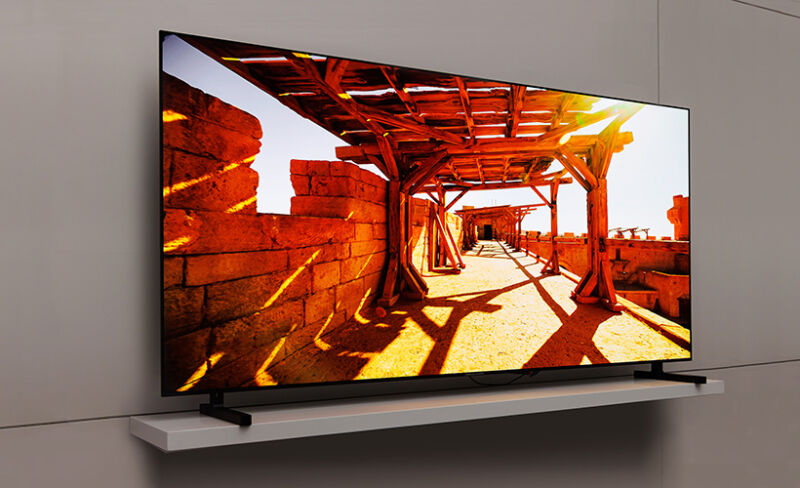

Samsung screen
OLED TVs are the premium focal point of many modern home theaters, but they’re still an imperfect technology. As usual last week CES in Las Vegas showcased some of the upcoming TVs, many of them based on OLED. We’ve seen larger sizes and greater competition among OLED panel makers; however, the most interesting development has been the increase in maximum brightness.
A darker screen has long been the underbelly of OLED monitors, especially compared to their cheaper LCD rivals. But while 2023’s upcoming OLED TVs will widely proclaim improved brightness capabilities and present the potential for unprecedentedly rich highlights, it will be years before you’ll want to put an OLED TV in your sunny living room.
OLED brightness issue
If you’ve listed the disadvantages of an OLED TV compared to an LCD, they are usually price and obscurity. Despite having deep, dark blacks, OLEDs are noticeably darker than LCD monitors. Deep blacks still help screens deliver superior contrast, and good OLED TVs can make HDR content stand out dramatically. But less overall luminance makes it difficult to enjoy the picture on an OLED TV in a well-lit room or positioned under a light.
Let’s take LG TVs as an example. According FlatPanels HDthe 2022 LG G2 recorded full-screen brightness of 269 nits with SDR out of the box and 166 nits with HDR. RTINGS.com reported 199 nits with SDR and 177 nits with HDR. That’s a noticeable difference from LG’s most premium 4K LCD TV, the LG QNED90. Mini LED TV achieves 571 nits with full white screen in SDR mode and 622 nits in HDR mode according to RTINGs review.
Of course, there’s a lot more to picture quality than a TV’s full-screen maximum brightness. When it comes to rich HDR highlights, the 2022 LG G2 has an edge over the Mini LED QNED90 (976 nits versus 750 nits respectively). And OLED TVs’ deep black levels and greater dynamic range create more subtle colors and details in dark areas.
But when it comes to selecting a TV for a bright room where people can view the screen from side angles, full screen brightness capabilities are (or should be) a serious consideration.
The harsh truth, even with the high-end OLED TVs promised this year, is that OLED TVs are actually much better suited for darker rooms. For an extremely expensive piece of technology, this can be a huge hurdle.
And while HDR with OLEDs is a sublime experience, some will opt for a TB LCD with advanced features like Mini LEDs and local dimming backlights to get a brilliant picture in bright rooms and with SDR content and strong contrast, but not in the OLED level when it comes to HDR.
New LG OLED TVs
At CES, LG made an announcement that looks pretty good: brighter OLEDs. But how and when do new TVs manage to squeeze out those extra nits?
LG’s 2023 OLED TVs include the G3 series of 55-, 65- and 77-inch 4K displays that claim to be up to 70% brighter than traditional OLED TVs. The TVs have a Brightness Booster Max that uses an updated “light control architecture and light boosting algorithms,” says LG, and isn’t available on all other LG 2023 OLED TVs.
An LG spokesperson said FlatPanels HD that the G3 series would be able to reach a peak brightness of around 1,800 nits, with the TV’s vivid mode possibly being brighter. Additionally, the publication said it saw a document suggesting that this mode will support a maximum brightness of 2,100 nits; both numbers will only apply to highlights in HDR mode. According lg monitorthat makes the G3’s OLED panel, its updated OLED technology can reach 2,100 nits in a 3% window.
Meanwhile, full-screen brightness can be expected to hit 235 nits, according to the document FlatPanelsHD saw.
With the TVs without firm pricing or release dates, those numbers could be subject to change and there’s still plenty to see and test. From what we’ve heard from early demos, LG Display’s 2023 OLED panels at least “look pretty bright” at first glance, per CNET. AN youtube video of HDTVTest examining an early production sample of the OLED technology behind LG’s G3 series, said the panel achieved 1,514 nits in a 10% window and 209 nits of brightness at full screen.

Comments
Post a Comment